Pepper variety Trinidad Moruga Scorpio
Are you ready to grow some really hot peppers? How about Trinidad Moruga Scorpion? In 2012, he entered the Guinness Book of World Records as the hottest pepper in the world.
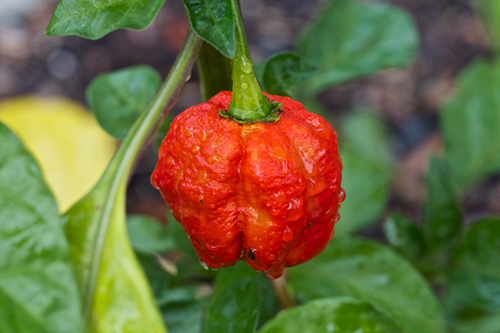
So how hot is Trinidad Moruga Scorpio pepper? To find out, a unit for measuring pungency was invented - Scoville, which makes it possible to compare the pungency of different types of pepper. For example, the pungency of the Jalapeno pepper, which many of us grow and taste, ranges from 3,500 to 10,000 Squill units. The Habanero pepper is significantly spicier than the Jalapeno and has a pungency of between 100,000 and 450,000 Scoville. And now our test subject is the Trinidad Scorpio, its severity is between 1,500,000 and 2,000,000 Scoville units. Just estimate this value - 2,000,000 units. It already turns out like a weapon. Even in some pepper spray cans there are no such values, and lovers of spicy use this fruit both fresh and in sauces.

Variety characteristics
The plant is tall, with good care it can reach a height of 1.5 meters. Very branched and spreading. Fruits in technical maturity are green, easily ripened. Ripe, depending on the variety, can be orange, green, yellow, white and brown. There may be differences in the shape and size of the fetus, but the main distinguishing characteristic of Trinidad Scorpio is the sharp, needle-like nose at the end of the fetus and the wrinkled structure of the fetus. The size of the fruit is up to 8 cm long. The wall thickness is 2 mm. The smell is citrus, strongly reminiscent of a mixture of orange and lemon. The taste is first fruity with a slight sweetness, then spicy - it clogs up all other tastes and aftertastes. One fruit produces from 20 to 30 seeds. Seed germination of the first year is up to 90%, the second - 60%, the third - 40%. Depending on the Trinidad Scorpion variety, up to 30 fruits can ripen on the bush at the same time.
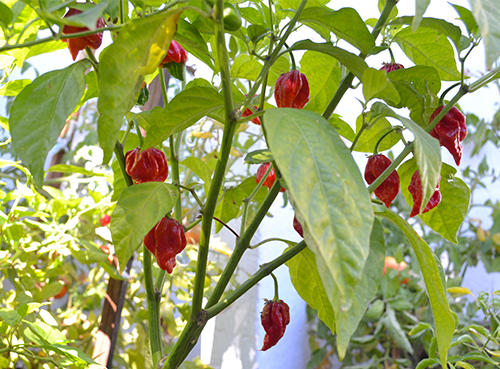
Growing features
In principle, the cultivation of this pepper is not very different from the cultivation of other hot varieties and if you follow a few rules, you can get an excellent harvest of ultra-sharp fruits without any problems.
- Pepper grows best in soil with a pH of 6.0 to 6.5, but can also grow at pH 5.5 and 7.0. Plants need a well-drained soil. If the pepper grows in the container, drain holes must be made in the bottom. The volume of the container is from 10 liters.
Important! the larger the container, the larger the plant will be.
- Trinidad Moruga Scorpio requires a minimum of six hours of sunshine per day and a minimum room temperature of 18 ° C.
Important! the more sun, the larger the fruit will be in size and sharpness. With a lack of sun, small fruits will be tied.
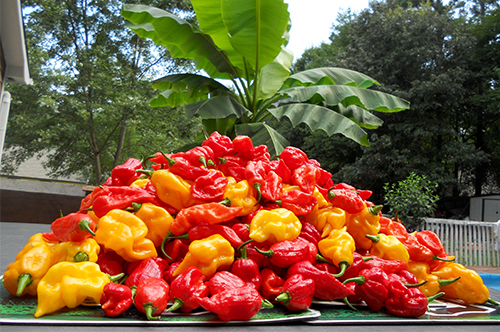
- It is necessary to regularly water and prevent the soil from drying out. It is advisable to mulch the ground.
- Fertilizing with mineral fertilizers should be carried out once a month, during the entire growing season.
- It is necessary to pinch the tips of the shoots to better stimulate the formation of fruits.
- If the flowers are not pollinated by insects, it is advisable to shake the plant or pollinate the flowers with a brush.
- When picking ripe peppers, wear rubber gloves.
- You can grow this variety both in a greenhouse and on a windowsill.
- Trinidad Scorpio can be grown as a perennial crop. To do this, in the fall, all shoots are cut off, the main part of the roots is also cut off, abundant watering stops. The pepper is placed in the shade. In February, they begin to irrigate again and put the plant on the sunny side. The kidneys should appear in a few weeks.
Germinating seeds
It is advisable to plant the seeds at the end of January, then there is the option of full ripening of the fruits (the growing season is from 150 days). The seeds are placed in a tissue soaked in a solution of Epin (plant growth stimulant) and kept for several days. Then they are planted in a container with earth and covered with plastic wrap to create a greenhouse climate. The first shoots appear in 1 - 3 weeks.After the formation of five true leaves, the peppers dive. When diving, you should not injure the root system, it is advisable to extract the plant with a lump of earth.
Conclusion
Following the above recommendations, you have the opportunity to join the spicy society, raise this burning record holder and try your hand at testing Trinidad Scorpio. And yet, it is important: when working with ripe fruits, you must observe safety precautions, work only with gloves and do not touch them with unprotected areas of the skin. Pepper juice can cause severe burns. It should be remembered that the capsaicin contained in Trinidad Scorpio does not dissolve in water and cannot be washed off with water. Use alcohol in such cases.
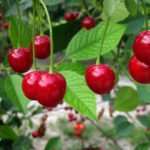


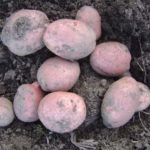
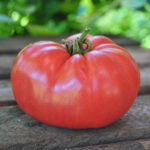
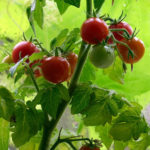



Raised this monster. I planted one plant in a greenhouse, another on a windowsill in a 10-liter container. In both cases, I collected ripe fruits, although I did not get results in more than 30 fruits from the bush, but I collected ten ripe fruits from each bush. So, my conclusions - yes, the seeds must be planted very early, so that all the fruits ripen, the plant must be constantly in the sun, root fertilizing with microelements. In terms of severity, I will not say how many Scoville, but the fruits are much sharper than Jolockia. Still, we do not have such a sun as in the homeland of this pepper and the fruits do not gain full pungency, but all the same - they are very sharp, not the right word - thermonuclear.
At the moment, the Scorpio repeater has begun to bloom. Grows on a windowsill on the sunny side. That year, at the end of the season, I thought about throwing it out, but I subtracted that I could leave it growing for the second year and the harvest would be bigger. As a result, he left, the branches completely cut off and stopped regular watering with water. I thought it would dry up and bend, but no, in the spring, buds appeared and began to grow further. The bush grew even more. Now I have begun scheduled feeding with microelements. By May, I think, the whole bush will be strewn with unripe peppers, they will most likely ripen by mid-July and will bloom in the second circle, maybe I’ll harvest a second crop. Most likely I'll leave the pepper for the third year, I'll see what happens.
I've also read about over-hot peppers and planted a brown (chocolate) scorpion. After soaking in a growth stimulator, only two of five seeds emerged. I think this amount will be enough. The sprouts were transplanted into a 7 liter container and placed on the windowsill on the sunny side. I planted it in early February. Now the scorpion has grown, blooms profusely, and several fruits have already set. With the seeds, they did not deceive, the pimples and a sharp sting characteristic of the variety are already visible. I will not say about the color until they mature. I do foliar feeding all the time, I fed it with potassium nitrate several times. The plant is now just huge, the lower leaves were like burdocks, I had to cut it off.
Finally, my first scorpion is ripe and I tried it. I'll tell you, it's just tin, took a bite off a small piece and everything, a fire in my mouth, it lasted 20 minutes. Very spicy, the smell of the fruit surprised, it smells like fruit. There are few seeds - about 15 pieces. I grew it on the windowsill, there was a sea of flowers, almost all fell off, and there were about a dozen ovaries. And another problem happened to the plant, the leaves began to curl and stopped growing, cracking. I tried to feed them with microelements - it doesn't help, they dry out and fall off. Who knows how to deal with this scourge? I just wanted to leave the plant for the second year, but apparently I would have to grow it again, though from my own seeds.
Another variety on top of hot pepper, which I have been growing for the last three years. The seeds are capricious, only seeds from the fruits from the first fork of the plant trunk sprout well. For the rest, germination is greatly impaired. For better germination, it is advisable to soak the seeds for several days in a solution of growth stimulants, such as Epin.I must say right away that the plant is thermophilic and loves the sun very much. Usually, if everything is done correctly, it grows up to 30 - 40 large red fruits. One plant received little light from me and the yield was 5 large fruits and 30 the size of cherries and not as sharp as those plants that grew in the sun. The fruits require caution in use, according to the Scoville scale, their pungency reaches 1.5 million units, but I think that in our climate they do not gain pungency to such an extent. It is not afraid of diseases, the fruits usually ripen by the end of August. The plant can be used as a perennial crop on a windowsill.